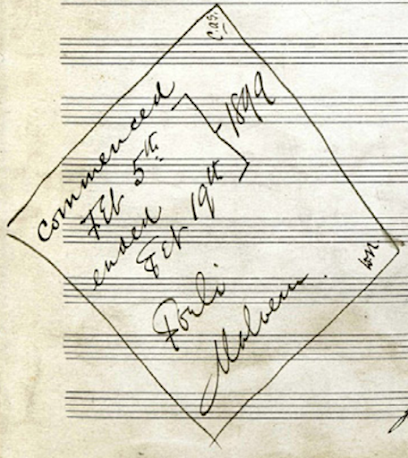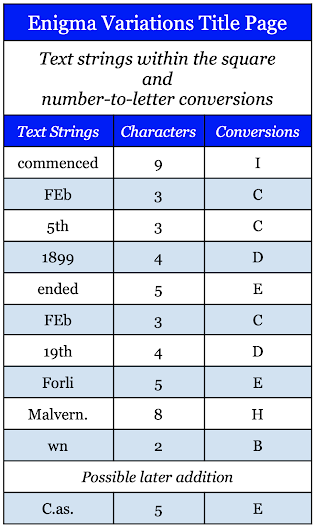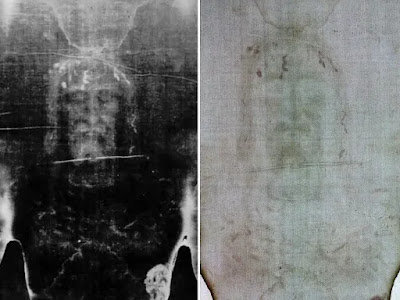The Enigma I will not explain – its ‘dark saying’ must be left unguessed, and I warn you that the connexion between the Variations and the Theme is often of the slightest texture; further, through and over the whole set another and larger theme ‘goes’, but is not played…So the principal Theme never appears, even as in some later dramas – e.g., Maeterlinck’s ‘L’Intruse’ and ‘Les sept Princesses’ – the chief character is never on the stage.
122 years ago on June 19, Hans Richter conducted the premiere of Elgar’s Enigma Variations at St. James Hall in London. That extraordinary work propelled Elgar from provincial obscurity to international acclaim, transforming his career from an itinerant music teacher to a celebrated composer. The original title on the autograph score is “Variations for orchestra.” The somber theme is labeled “Enigma,” hence the work is popularly referred to as the Enigma Variations. Elgar advised the Theme is called “Enigma” because it is a counterpoint to a famous melody that is not heard but can play “through and over” the Variations. This absent tune is the melodic cornerstone of the work. The identity of that elusive melody fuels an ongoing debate as scholars and laypersons refuse to coalesce around any particular solution.
Some argue there is no answer at all by insinuating Elgar concocted the notion of an absent principal Theme as an afterthought, practical joke, or marketing ploy. Others take Elgar at his word and accept the challenge that there is a famous melody lurking behind the Variations’ contrapuntal and modal facade. Regardless of what side is taken in this debate, conventional scholarship insists the solution can never be known with certainty because Elgar took his secret to the grave in February 1934. They assert Elgar never wrote down the answer for posterity to discover. However, such skepticism minimizes or completely overlooks Elgar’s expertise in cryptography. A compulsion for coding and decoding secret messages is a reigning pillar of his psychological profile. Elgar’s obsession with that esoteric art merits an entire chapter in Craig P. Bauer’s treatise Unsolved! That incontestable fact raises the possibility that Elgar enciphered the answer to his Enigma within the Variations.
A decade of trawling the Enigma Variations has netted over one hundred cryptograms in diverse formats. These ciphers encode a set of mutually consistent and complementary solutions. Although that figure may appear excessive, it is entirely consistent with Elgar’s obsession with ciphers. More significantly, they provide definitive answers to the core questions posed by the Enigma Variations. What is the missing principal Theme? Answer: Ein feste Burg (A Mighty Fortress) by Martin Luther. What is the “dark saying” in the Enigma Theme? Answer: A musical Polybius box cipher embedded in its inaugural six bars. Who is the secret friend and inspiration behind Variation XIII? Answer: Jesus Christ, the Savior of Elgar’s Roman Catholic faith. The cryptographic evidence authenticating these discoveries is extensive, diverse, and formidable. These discoveries reveal that the Enigma Variations is Elgar’s symphonic homage to cryptography.
It was recently observed that word lengths in the Variations’ title convey coded information about the covert principal Theme and the secret friend memorialized in Variation XIII. The Title Word Lengths Cipher converts the number of letters from each word into their corresponding letters of the alphabet using a basic number-to-letter key (1 = a, 2 = b, 3 = c, etc.). Through this method, the word lengths of the Variations’ title encipher anagrams of the initials for Jesus Christ (JC), the Christogram IHC, the abbreviation BC meaning “Before Christ,” and the initials for the covert principal Theme (EFB). It was theorized that Elgar may have also applied the same form of encipherment to what he wrote in a squared-off area on the lower left-hand portion of the title page. What follows are some preliminary findings.
The Title Page Square Word Lengths Cipher
The cover sheet of the Enigma Variations has a unique feature not found on any of Elgar’s other autograph scores. On the lower left-hand corner of that inaugural page, he penned a tilted square with the dates and location of the orchestration. A magnified view of that portion of the page is shown below:
Most of the script is written with thick, dark lines consistent with the rest of Elgar’s writing on that page. The only exception is “C.as” in the uppermost corner consisting of a smaller font with thinner lines and a lighter hue. For these reasons, one may reasonably suspect that “C. as.” was added sometime after the square and its other contents were first penned.
To probe what Elgar initially wrote within this square for prospective word-length ciphers, the text strings were cataloged and counted. There are four words (commenced, ended, Forli, Malvern.), three numbers (5th, 1899, 19th), two abbreviations (FEb & FEb), and one set of initials (wn). These are listed below followed by their number of characters:
There is a total of 46 characters in these ten text strings. That number is conspicuous because Luther’s hymn Ein feste Burg was inspired by Psalm 46. As an aside, it is intriguing that Luther composed 36 hymns because that figure matches the opus number of the Variations.
The application of a number-to-letter key converts the character sums of the various text strings within the title page square into the following ten letters: I, C, C, E, D, C, D, E, H, and B. Before proceeding with the decryption of these seemingly random letters, it is instructive to recognize that Elgar used phonetic spellings in his correspondence. Some examples of his inventive spellings are listed below:
- Bizziness (business)
- çkor (score)
- cszquōrrr (score)
- fagotten (forgotten)
- FAX (facts)
- frazes (phrases)
- gorjus (gorgeous)
- phatten (fatten)
- skorh (score)
- SSCZOWOUGHOHR (score)
- Xmas (Christmas)
- Xqqqq (Excuse)
- Xti (Christi)
When the ten plaintext letters (ICCEDCDEHB) are treated as an anagram, one possible permutation is “E CC IHC B DED.” Caroline Alice Elgar is the dedicatee of Variation I. In her diary, she routinely refers to her husband as “E.” “CC” is a phonetic realization of “sees.” “IHC” is a Christogram drawn from the first three letters of the Greek spelling for Jesus. “B” is a phonetic version of “be.” “DED” is a rendering of “dead.” Armed with these decryptions, the anagram “E CC IHC B DED” may be interpolated as the phrase “E[lgar] sees Jesus be dead.” The phrase “Jesus be” appears repeatedly in The Parochial Hymn Book published in London for Roman Catholic services. Elgar served at St. George’s Church as the assistant organist to his father from 1865 to 1875, and as chief organist from 1875 until 1879 for a total of fourteen years of service. Factoring in the five-character sequence “C.as.” would add an extra “E” and permit the anagram “EE CC IHC B DED” (EE sees Jesus be dead). Elgar often signed his letters with his initials “EE”.
Why would Elgar encode such a statement? The Italian photographer Secondo Pia took a series of photographs of the Turin Shroud in May 1898. The Turin Shroud is an ancient Jewish burial cloth bearing the faded image of a crucified man that many believe to be the body of Jesus. As Pia developed his pictures in a dark room, he was stunned by the positive life-like images on his photographic negatives. Miraculously, the Turin Shroud is a photographic negative that predates the invention of photography by millennia. This discovery became an immediate sensation in the religious and secular press. For the first time, Christians could gaze on the face and crucified body of Jesus in a way never experienced before. The statement “Elgar sees Jesus be dead” is an apt description of what Elgar saw in Secondo Pia's historic and widely publicized photographic negative of the Turin Shroud. The timing is right because Elgar did not begin work on the Variations until five months later in October 1898. This conclusion is bolstered by coded references to the Turin Shroud in the Enigma Variations.
Another anagram that may be obtained from those ten plaintext letters is “DED CC EB IHC.” “IHC” is a Christogram for Jesus. “DED” is a phonetic spelling of “dead.” “CC” is a phonetic rendering of “seas.” “EB” is an incomplete spelling of “ebb.” Consequently, the anagram “IHC DED CC EB” may be interpolated as “Jesus — dead sea’s ebb.” Alternatively, the plaintext letters may be reshuffled as “DED CC BE IHC” and decrypted as “Dead seas be Jesus.” Both solutions establish an association between Jesus and a dead sea. The phrase “be Jesus” appears in the 1886 edition of The Family Prayer Book published in London for Roman Catholics. That same phrase also surfaces in the 1881 edition of The Parochial Hymn Book.
As previously mentioned, Variation XIII is dedicated in secret to Jesus. In that movement, Elgar cites a melodic incipit from Mendelssohn's overture Calm Sea and Prosperous Voyage to symbolize the “deathly stillness” of a calm sea. These melodic fragments are accompanied by an ostinato figure that reprises the Enigma Theme’s palindromic rhythm to sonically portray the ebb and flow of the sea. Elgar associates the “deathly stillness” of the sea with the death of Jesus. The phonetic anagram “Jesus, dead sea’s ebb” covertly acknowledges the marine symbolism tied to the crucifixion of Christ. The word “sea” is a transparent wordplay on the letter C, the initial for Christ. Psalm 46 invokes the imagery of the sea in verses 2 and 3, presenting a literary link between the secret melody and Variation XIII.
There is a theological foundation for associating the ocean with the death and burial of Jesus. When the religious leaders demanded that Jesus give proof of his heavenly authority, he responded by invoking the Sign of Jonah. Matthew 12:39-41 records his reply:
But he answered them, “An evil and adulterous generation seeks for a sign, but no sign will be given to it except the sign of the prophet Jonah. For just as Jonah was three days and three nights in the belly of the great fish, so will the Son of Man be three days and three nights in the heart of the earth.
Jonah was a prophet who was swallowed up by a whale and spent three days in the depths of the ocean before being miraculously released onto the shore to resume his mission to the city of Nineveh. Jesus explained that Jonah’s oceanic plight prefigured his own death and resurrection. Jonah’s harrowing account still makes headline news. For example, diver Michael Packard was recently ingested by a whale off of Cape Cod and spit out after spending a short time in the mouth of the great fish. Journalists liken Packard’s ordeal to the prophet Jonah’s miraculous whale encounter.
A square on the cover of the Variations contains text pertaining to the dates and location of the orchestration. This is the only known example of a square on the cover of any of Elgar’s scores. The terms used in this squared-off area were analyzed for prospective cryptograms by adding up the number of characters in each text string and converting those sums into their corresponding letters of the alphabet. The plaintext was then assessed for possible anagrams. One possible outcome is “E CC IHC B DED” which may be interpreted as “E[lgar] sees Jesus be dead.” The addition of an extra “E” based on the questionable text string “C.as.” would permit Elgar’s dual initials in this anagram: “EE CC IHS B DED.” Coded references to the Turin Shroud in the Variations account for this unexpected decryption. Another possible anagram is “DED CC BE IHC” which may be read as “Dead seas be Jesus.” The plaintext may also be rearranged as “IHC DED CC BE” and read as “Jesus — dead sea’s ebb.” These alternate anagrams bolster the link between Christ and the marine atmosphere of Variation XIII, a movement dedicated in secret to Jesus. To learn more about the secrets of the Enigma Variations, read my free eBook Elgar’s Enigmas Exposed. Please help support and expand my original research by becoming a sponsor on Patreon.








No comments:
Post a Comment